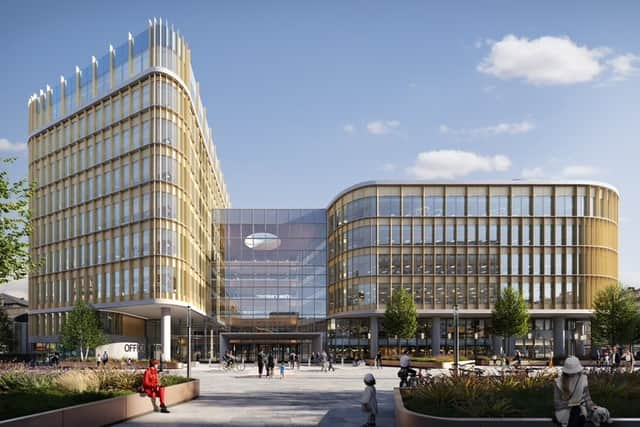Council approves huge £155m HMRC office complex that will transform Newcastle city centre
and live on Freeview channel 276
The biggest office development in Newcastle city centre’s history has taken a major step forward, with HMRC looking set to move more than 9,000 jobs to a huge complex that will dramatically transform Pilgrim Street.
Councillors gave their backing on Friday morning to the £155m Pilgrim’s Quarter project, pushing the ambitious scheme closer to reality.


Advertisement
Hide AdAdvertisement
Hide AdThe massive office block will be up to nine storeys tall and wrap around Pilgrim Street, John Dobson Street, Market Street, and New Bridge Street West – taking over a huge patch of prime land, including the site of the former Odeon cinema.
It is earmarked to be a new North East base for HMRC, which hopes to relocate thousands of jobs there from its current sites in Longbenton and Washington in 2027.
The landmark scheme, put forward by the Reuben Brothers, was approved unanimously by Newcastle City Council’s planning committee on Friday lunchtime – but will also need a final sign-off from the Government before it can be built, due to worries over the “irreversible” damage it will cause to a historic building on the site.
Heritage organisations, including Historic England and the Twentieth Century Society, have aired concerns over the 1920s-built Carliol House, which will have its Art Deco facade incorporated into Pilgrim’s Quarter but its interior torn down.


Advertisement
Hide AdAdvertisement
Hide AdTim Wickens, of the Northumberland and Newcastle Society, told the committee that the harm done to the grade II listed building, in Market Street, would be “substantial and irreversible” and said he believed it possible to integrate its interior into a new development too.
Ryder Architecture’s Ian Kennedy responded that developers had tested out options to retain most of the building, which has been largely unoccupied for 12 years, but that it was deemed unsuitable for HMRC’s modern needs because of big differences in its floor levels compared to the rest of the new offices.
He added that Pilgrim’s Quarter would be a “high quality addition to the city centre, acting as a gateway to the regenerated Pilgrim Street and as a catalyst for further regeneration and economic growth”.
Councillors agreed with city planners’ conclusion that the harm caused to Carliol House was outweighed by the overwhelming economic benefits brought about by the influx of jobs to the city centre.
Advertisement
Hide AdAdvertisement
Hide AdStephen Lambert said that stopping this development would likely mean leaving Carliol House, where his mother used to work for the North Eastern Electricity Supply Company, empty for another 12 years.
The Kenton councillor also expressed hopes that it would lead to a “rebirth” of cafes and other small city centre businesses forced to close during the pandemic, while fellow Labour representative Paula Holland added that the Pilgrim Street area was in need of a “clean sweep” after buildings like the old Odeon and the Dex car park were left to fall into disrepair.
Liberal Democrat Henry Gallagher raised concerns about the impact on businesses around the Longbenton Ministry site that will lose thousands of potential customers when the move to the city centre goes through, but agreed that the Pilgrim’s Quarter development was “worthy of support”.
Matt Verlander, director of planning consultants Avison Young, said: “We welcome the decision of the City Council’s Planning Committee today which is another important step in the process of securing the necessary consents for the scheme. The Pilgrim’s Quarter development and bringing HMRC to the heart of the city centre is hugely important for the city and we look forward to continuing to progress the project.”
The application will now be referred to the Secretary of State for Levelling Up, Housing and Communities for final approval, which is required because of heritage bodies’ objections.